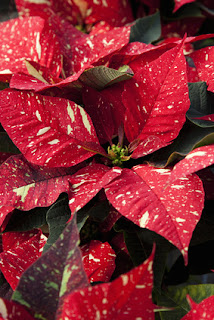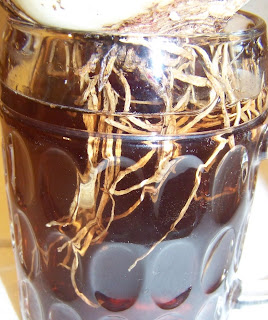With most parts of the country suffering under high temperatures and/or drought conditions I want to share with you a newsletter that I recently received from Jung Seeds....
The
drought and heat that we are experiencing this summer has not been
seen for many years and can do a lot of damage to your trees, shrubs,
and perennials if they are not managed properly. The yellowing and
curled leaves, fruit drop and other symptoms are effects seen on
plants right now, but there can be intermediate and long-term damage
if watering is not done.
Secondary damage may be increased by wild
life and insects feeding on garden plants and fruits. Long term
damage may be root damage, diminished winter hardiness, twig die back
and eventual death. So here are a few things that can be done to
lessen the damage done by drought.
Prioritize the watering of
plants so the most susceptible are taken care of first.
The first
class of plants that should have high priority are your trees and
shrubs.
This is most important with any new plantings. New plantings
would include any trees and shrubs that have been planted in the last
two years. When watering these plants it is necessary to let the
water trickle on the ground for a longer period of time. This will
insure that water gets down to the roots that take up the water. If
you go out and water for a short period of time, the water will not
reach the roots where it needs to go.

The next class of plants
that should have medium to high priority is your perennials, fruits
and nut trees, and newly planted grass or sod. These plants have most
of their roots in the top 6 inches of soil and if the drought gets
severe, damage or complete death will occur if watering is not
done.
Lower priority plants in extreme drought would be
established lawns, herb plants and annuals. The reason for annuals
and herb plants is they require the most watering to keep alive and
can be replaced inexpensively or can be replanted next year when
adequate moisture is available.
Lawns
Lawns
are composed of bluegrass and fescues that are adapted to drought
conditions. They will go dormant in seasons of drought and will
recover when the rains and cool weather appear in the fall.
If you
lightly water your grass during times of drought, the roots of the
plants will stay shallow.
When you stop watering, the roots will dry
up and the plants will be more susceptible to drying out and death
than plants that have not been watered.
If you do mow the lawn the
height should be increased by at least an inch to help shade and
shield the crowns from drying out.
Keep foot and equipment traffic to
a minimum as the crowns of the grass plants become brittle and can be
easily damaged by walking on them. This is especially true when the
grass is brown and brittle.
Perennials,
Vegetable Plants and Annuals
These
plants tend to have shallow roots systems. Frequent watering is
necessary to keep them alive.
Mulching these plants to shade the soil
and keep the weeding down is an excellent use of mulch.
The mulch
should be organic such as ground bark, cocoa bean hulls, ground corn
cobs, shredded leaves or grass clippings make excellent mulch. The
mulch will allow you to water less frequently and will decompose
which builds up your soil. When mulching use a little extra
fertilizer to help break down the mulch.
Weeding
It
is very important to keep your gardens, perennial beds and annual
beds free of weeds.
Weeds are the plants that are best adapted to an
area and will tend to be more aggressive when water is limited.
These
plants will then grow well and take up most of the moisture. This
will make it even harder for the plants you want to grow and
succeed.
Watering
Tips
Preferred
Method of application....It is important to apply enough water to
thoroughly wet the root zone when water is applied.
Larger plants
such as trees may require a drip for a couple hours to properly
water. To use this soaking application it would be best to invest in
a soaking hose or drip irrigation for vegetables, annuals and small
fruit. Water is applied at lower pressure so it just trickles out of
the hose to allow the whole root zone to be well watered.
When
to Water....Water should be applied when the soil is completely dried
out. Wilting or scorching of leaves is a sure sign of the need for
water.
Early morning is the best time of the day to water so the the
leaves dry out by mid morning.
Watering in the evening will sometimes
lead to more plant diseases as the water on the leaves will not dry
out and spores of the diseases will have all night to germinate and
infect your plants.
How much....A good rule of thumb is to
apply one inch of water per week over the surface of the soil. This
will vary depending on the type of soil. If you have a heavy clay
soil, less water is needed, but if you have a sandy soil the amount
needed may be an inch twice a week instead of once a week.
Others
Who Need Water
When
thinking about the need for water, don't forget the wildlife that
also is experiencing these hot, dry conditions.
Put out a bird bath
for the fine feathered creatures and maybe even a pan of water in a
protected area for other wildlife. They also can suffer from the lack
of water.
Happy Growing,




















